Cookies are used for optimal website experience.
New LEDs for life and professionals
Light quality
The CRI color rendering index is one of the most important characteristics of a light source. It was introduced in 1965 in order to distinguish between light sources with the same color temperature because they conveyed colors differently. The color rendering index measures the degree of deviation of the colors of an object illuminated by a light source from its color when illuminated by a light source of the same color temperature, taken as a reference.
The CRI is measured on an Ra scale of 14 colors: 8 primary colors and 6 secondary colors, and the value cannot exceed 100. Samples of given colors are illuminated by the reference source and the light source to be measured. The color shift relative to the reference source is determined by the measuring instrument and the CRI is calculated from the data obtained.
CRI
Reference colors:
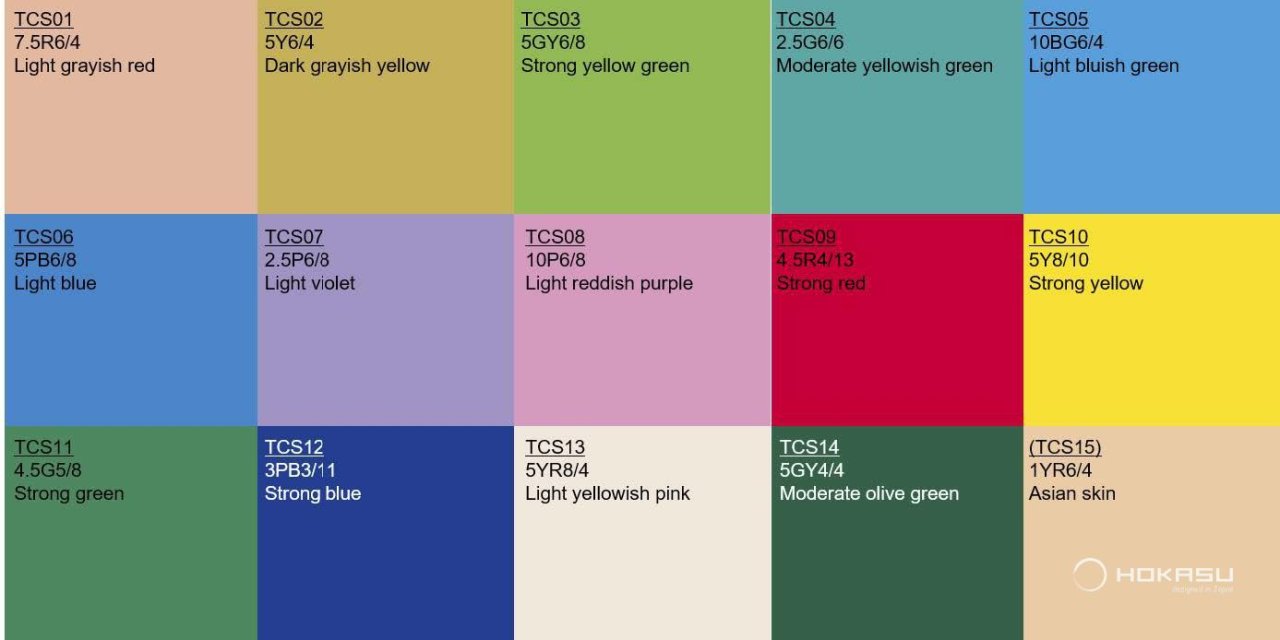
Why R9, R13, R15 are important?
Due to the EN 12464-1 specification for lighting, only the Ra value is usually taken into account. Values for saturated colors R9 to R12 are often scarce. For this reason, the value for saturated red, the R9 value, is also indicated for retail.
The values obtained for the colors tested R9 to R15 give details on the color rendering of saturated colors (R9 to R12), flesh color (R13), chlorophyll color (R14) and Asian flesh color (R15).
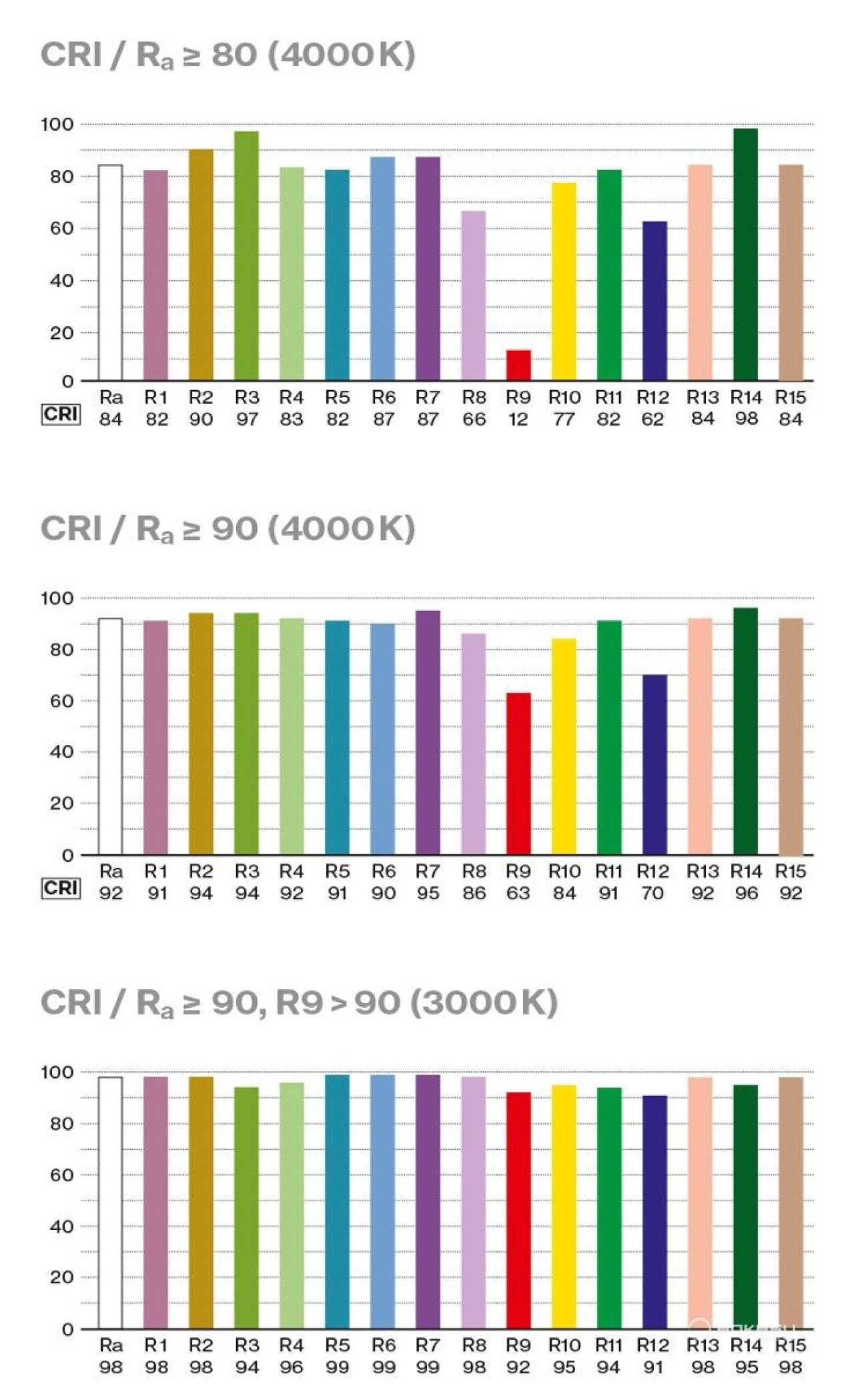
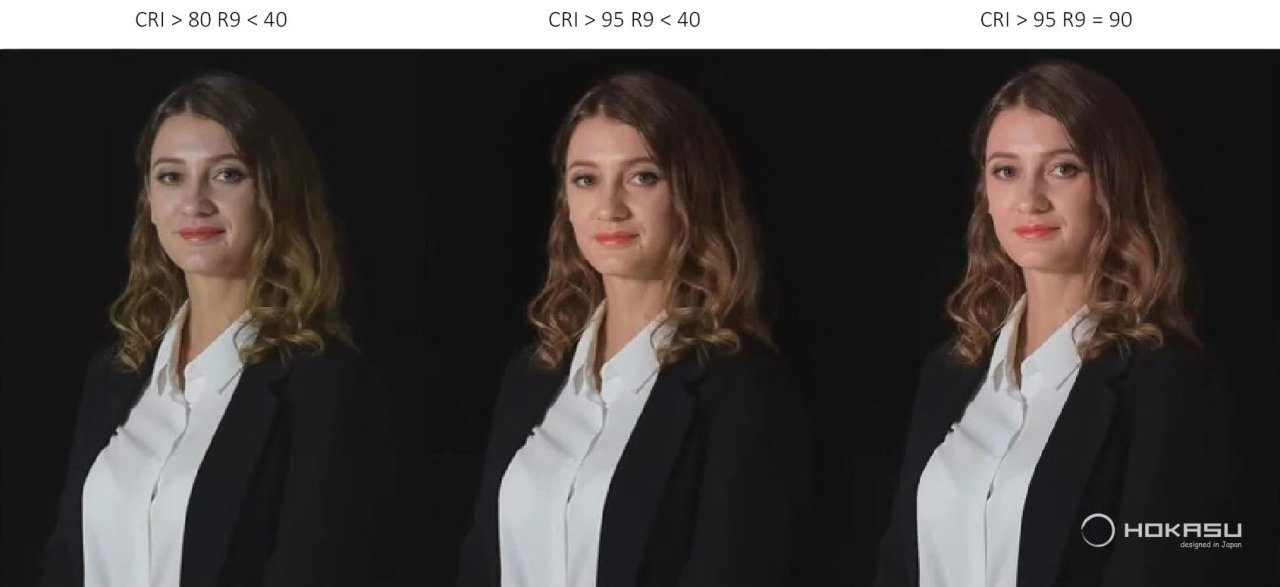
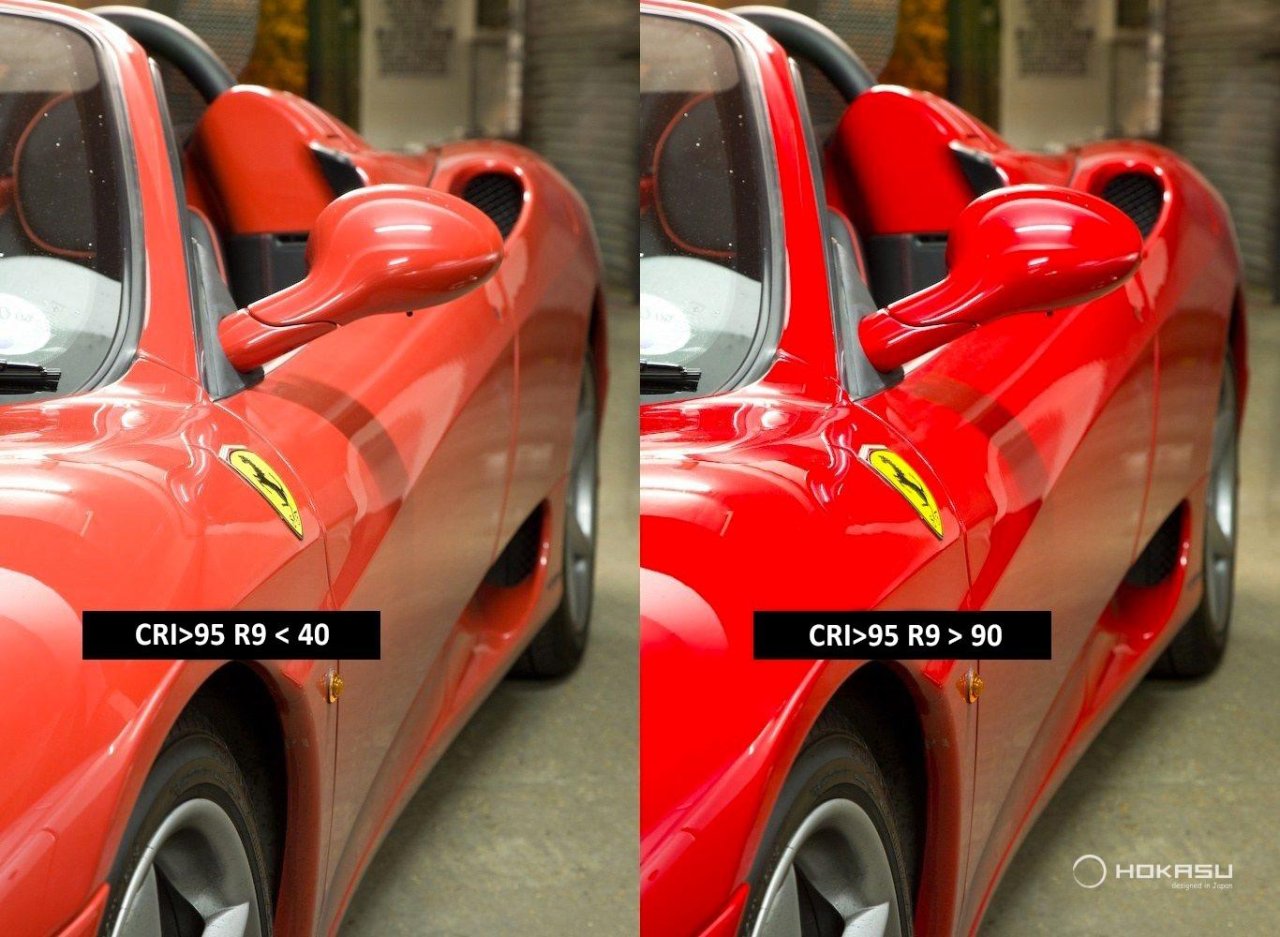
nLED
It's not about adding or faking colors, it's about showing subtle authentic beauty.
The new TM-30 light quality standard
The method includes 2 indices:
- Rf (fidelity) indicates the match of the 99 colors under the light source being tested. Rf has the same meaning as CRI, but is more reliable in determining the accuracy of color rendering because of the use of more shades.
- Rg (gamut) shows the saturation of these colors. Normal color saturation corresponds to Rg = 100. If the colors of the illuminated object become faint compared to the reference source, Rg < 100. If the saturation increases, Rg > 100.
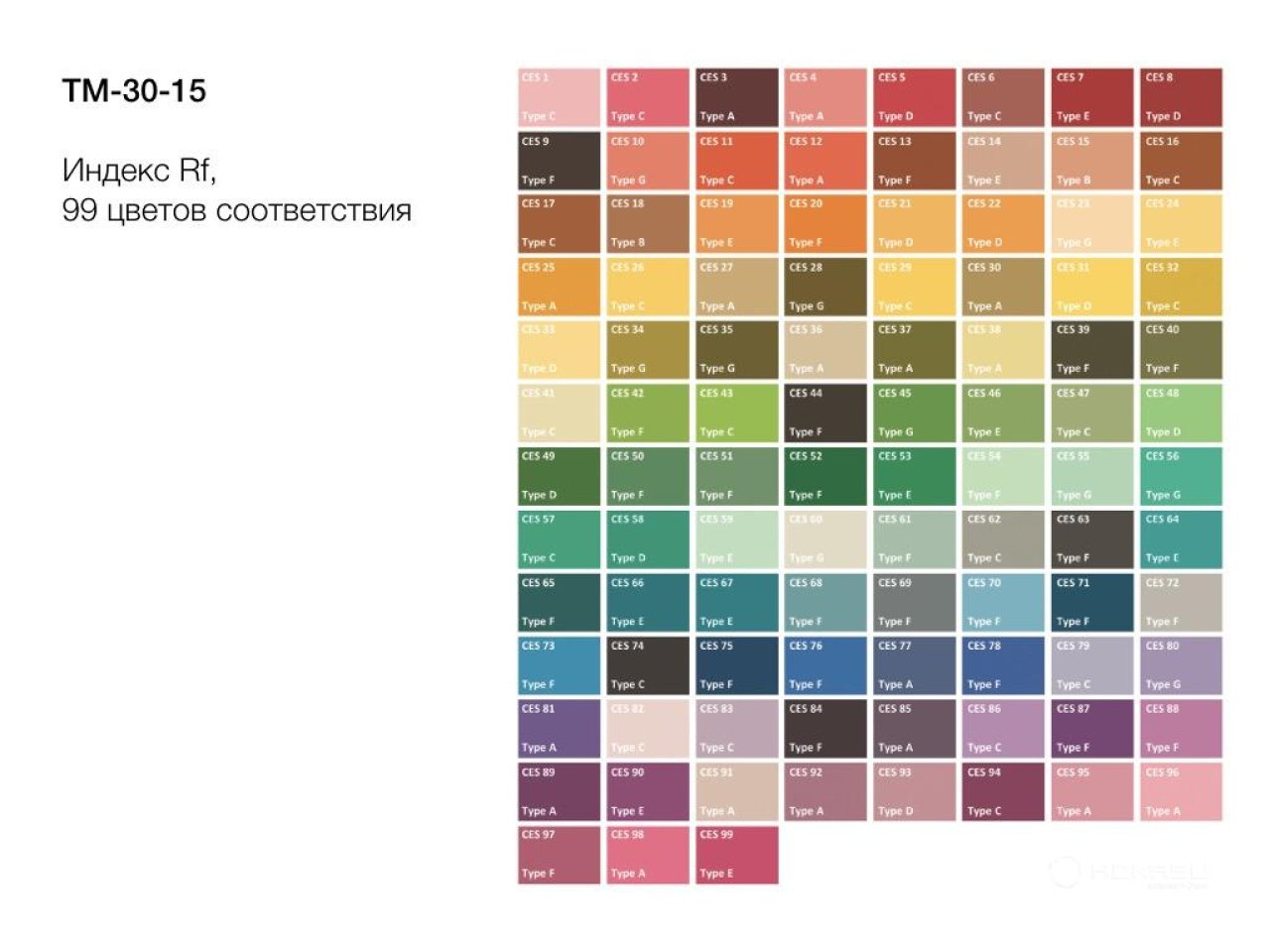
Rendition fidelity Rf (Rendition fidelity) assessment
Instead of 8 test colors, 99 test colors that are actually encountered in everyday life were selected. These 99 test colors are evenly distributed in the color space. The color fidelity score will be highest if the coordinate of the test light source (red square) coincides with the coordinate of the reference (black dot).
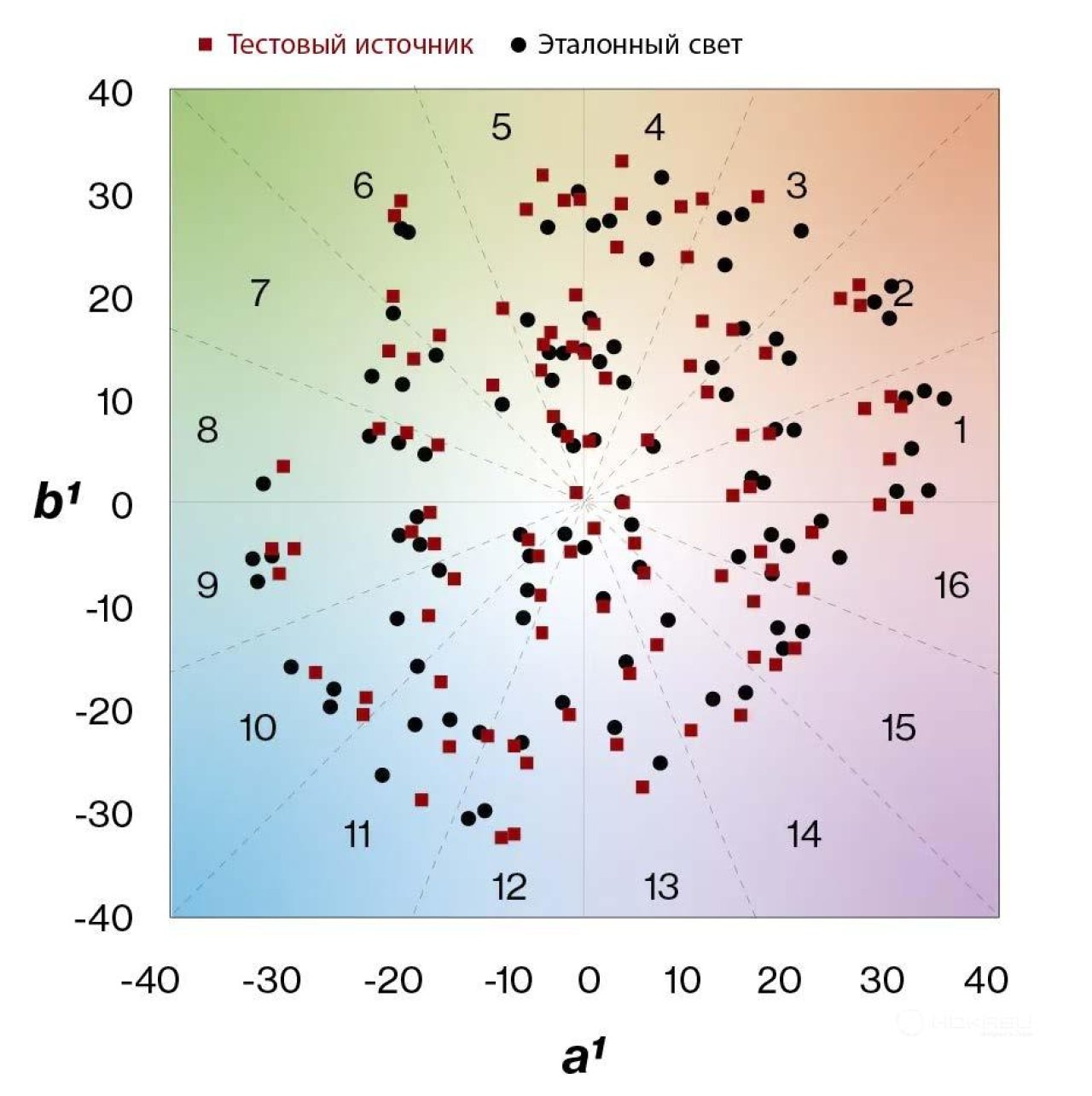
Rg (Rendition gamut) color saturation evaluation
To determine color saturation, i.e. Rg, the color space is divided into 16 segments. All chromaticity points present in one segment are averaged to a single common chromaticity point.
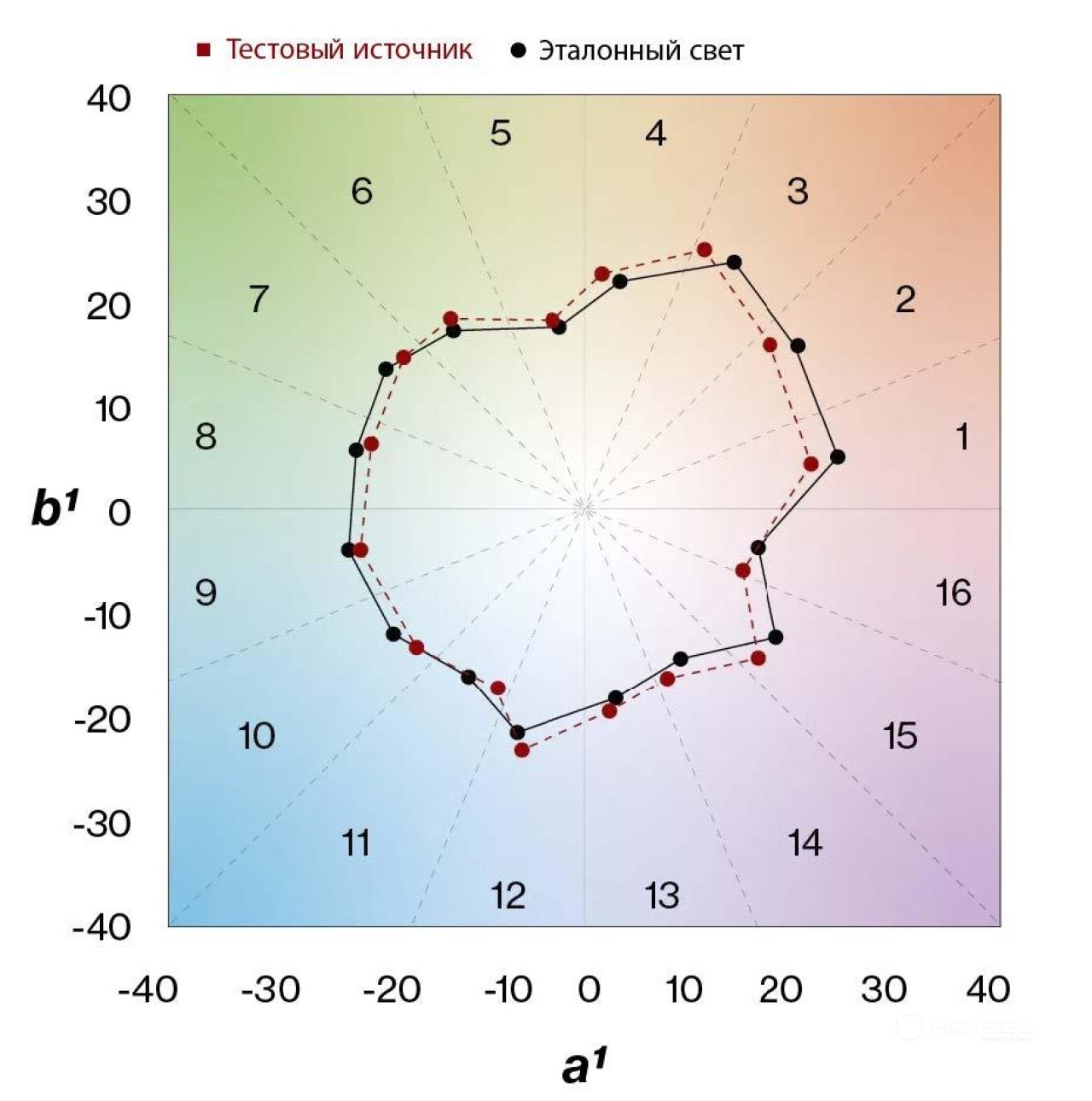
Color saturation representation Rg
For a visible representation of saturation deviations, the color space is stretched so that the 16 averaged color points are on the same circle (black line). The figure to the right is called Color Vector Graphic: The red line shows the results of the test light source. This graph clearly shows the deviation of the test light source from the reference, which is indicated by the black arrows.
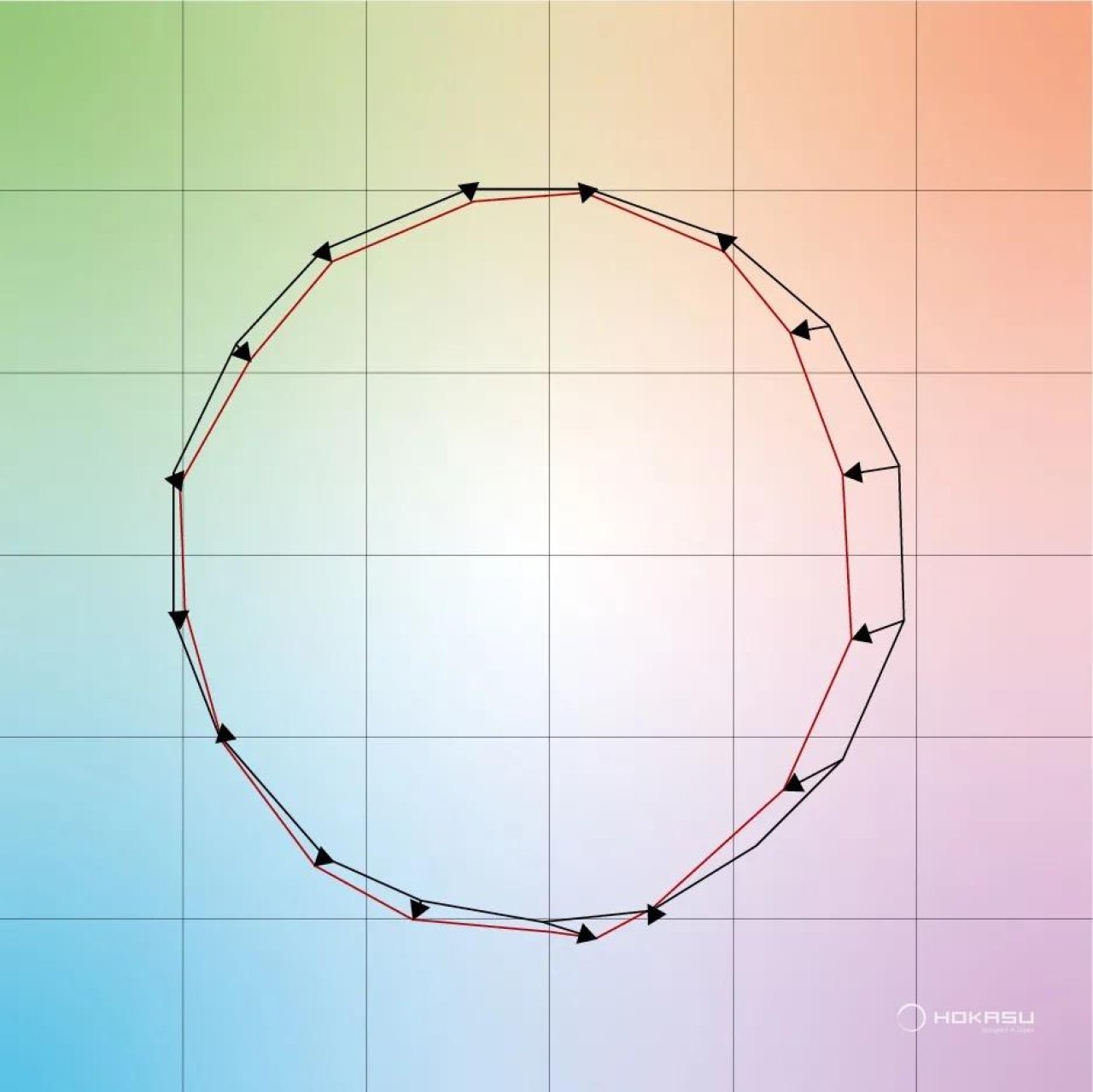
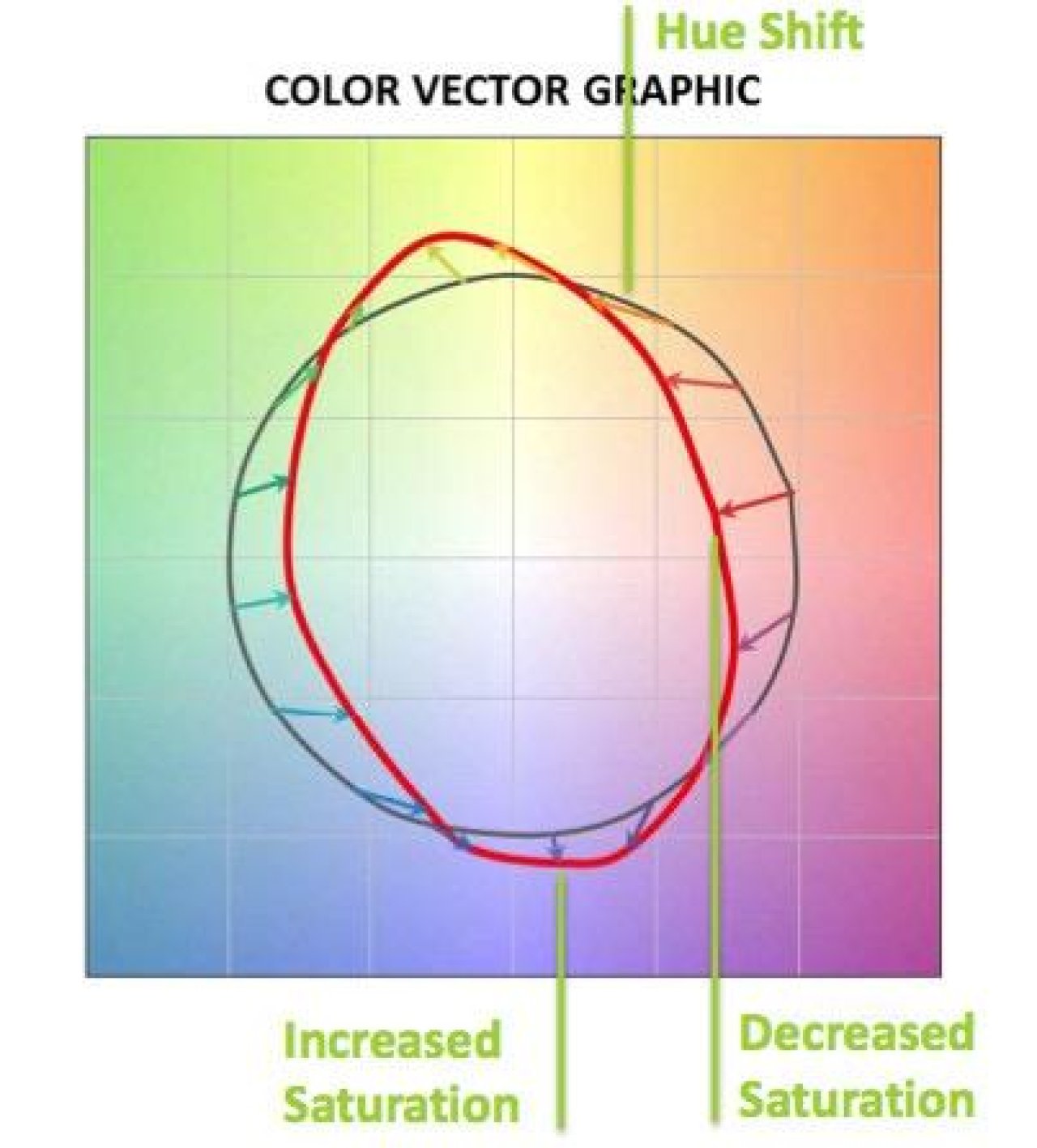
Rendition fidelity & Rendition gamut
- The average value for all 99 test colors is the Rf value (f stands for fidelity, i.e. color fidelity). The Rg value (g stands for gamut, i.e., color gamut) is used so that color saturation can also be evaluated. The two values are determined together.
- The maximum value for Rf is 100; a maximum value of 140 is theoretically possible for Rg. The closer the Rf value is to the maximum value of 100, the closer the Rg value is also to the maximum value of 100.
- Good estimate: Rf > 80; Rg between 85 and 115 yellow dotted line.
- Very good estimate: Rf > 90; Rg between 90 and 110, green dotted line.
- Excellent grade: Rf = 100; Rg-100, green dot.
- Typical light sources with CRI ≥ 80 have a value slightly below Rf 80 and a lower saturation Rg 80, blue zone.
- Typical light sources with CRI ≥ 90 have a value slightly below Rf 90 and have saturation in the Rg 90 range, the blue zone.
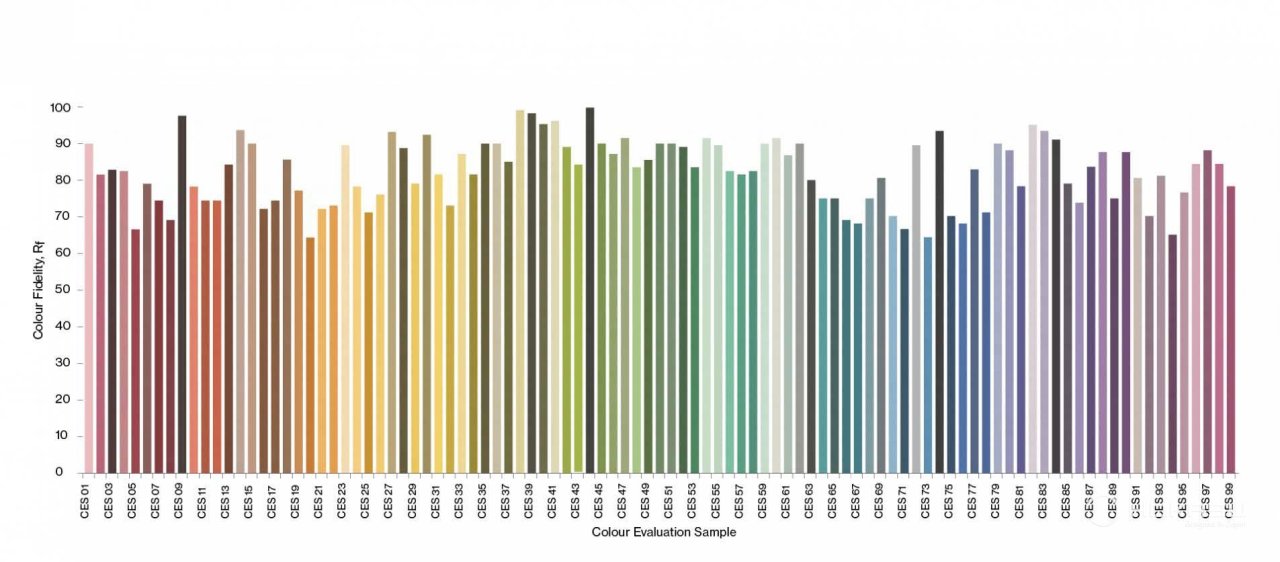
Rf color fidelity representation (Rendition fidelity): Evaluation of the light source using 99 test colors, Rf is the average of the evaluations of all 99 colors.
General graphical representation of Rf and Rg
Which values are good and which are excellent?
Where in this matrix are the known color estimates CRI ≥ 80 and CRI ≥ 90?
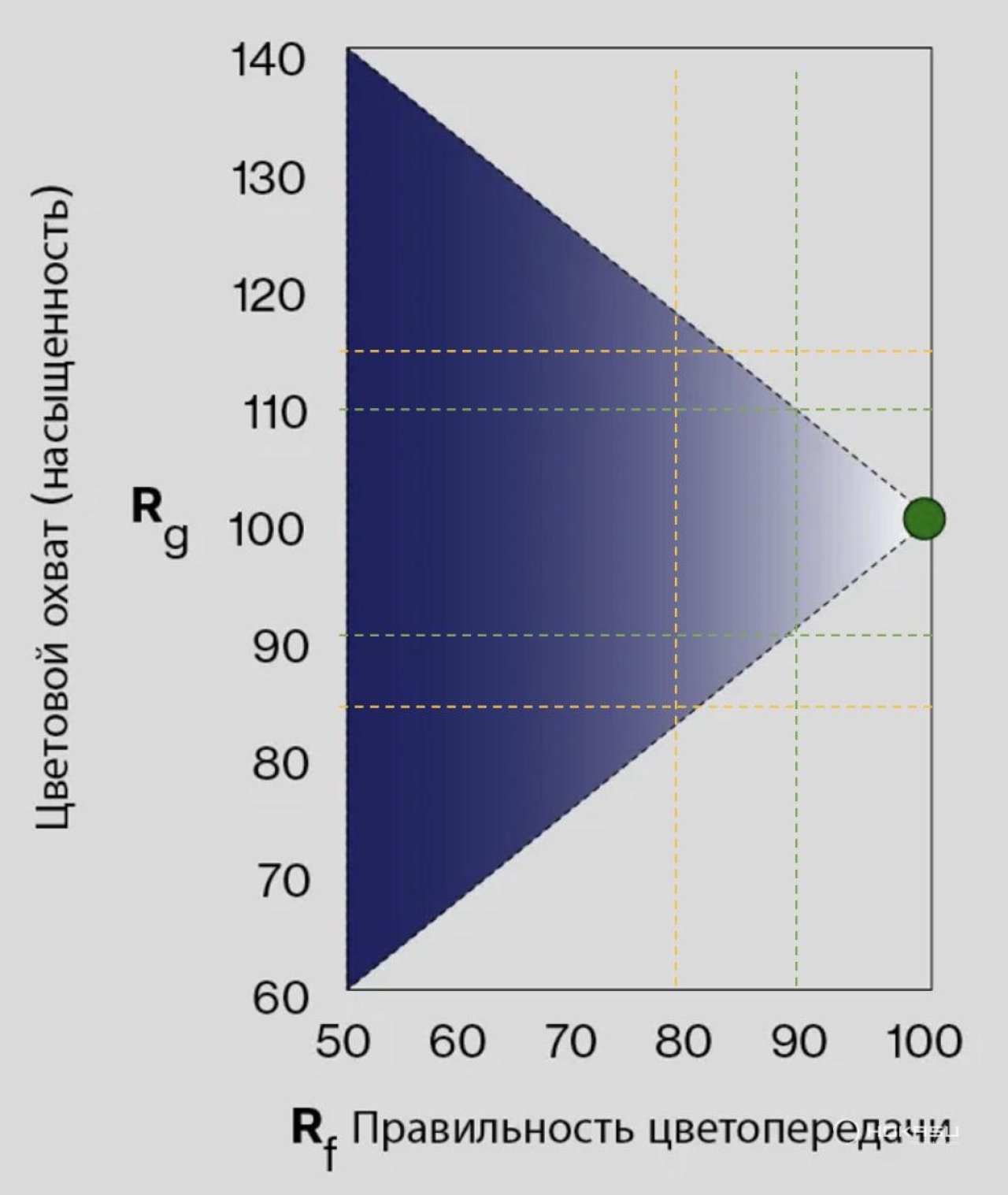
How do I use this tool?
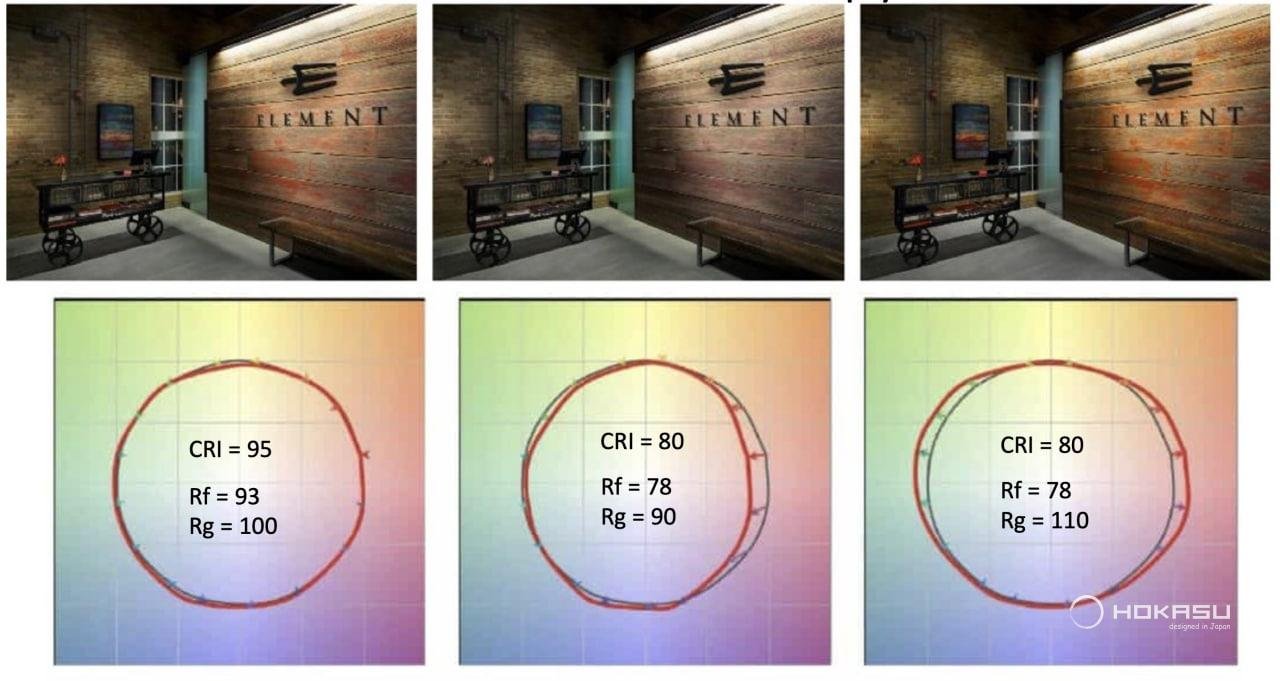
The point is in the stores

The nLED series meat diode
It perfectly reproduces the red color and its shades while maintaining the quality of white, so it is ideal for lighting meat and fish products.
When lighting meat products, it is especially important that the colors are not distorted, because even the slightest distortion of color of these products makes them stale in the eyes of buyers and can be a reason for refusal to make a purchase.
The Light Pink solution is designed specifically for lighting goods with red hues, such as meat, meat products and red fish. It is based on the expression of the red and blue spectrum and the reduced activity of the yellow spectrum. The result is maximum accuracy and saturation in the red colors. The important thing is that the white color looks cleaner, which is necessary to convey the whiteness of the veins.
So the Light Pink LEDs emphasize the red color of the meat while keeping the veins white.
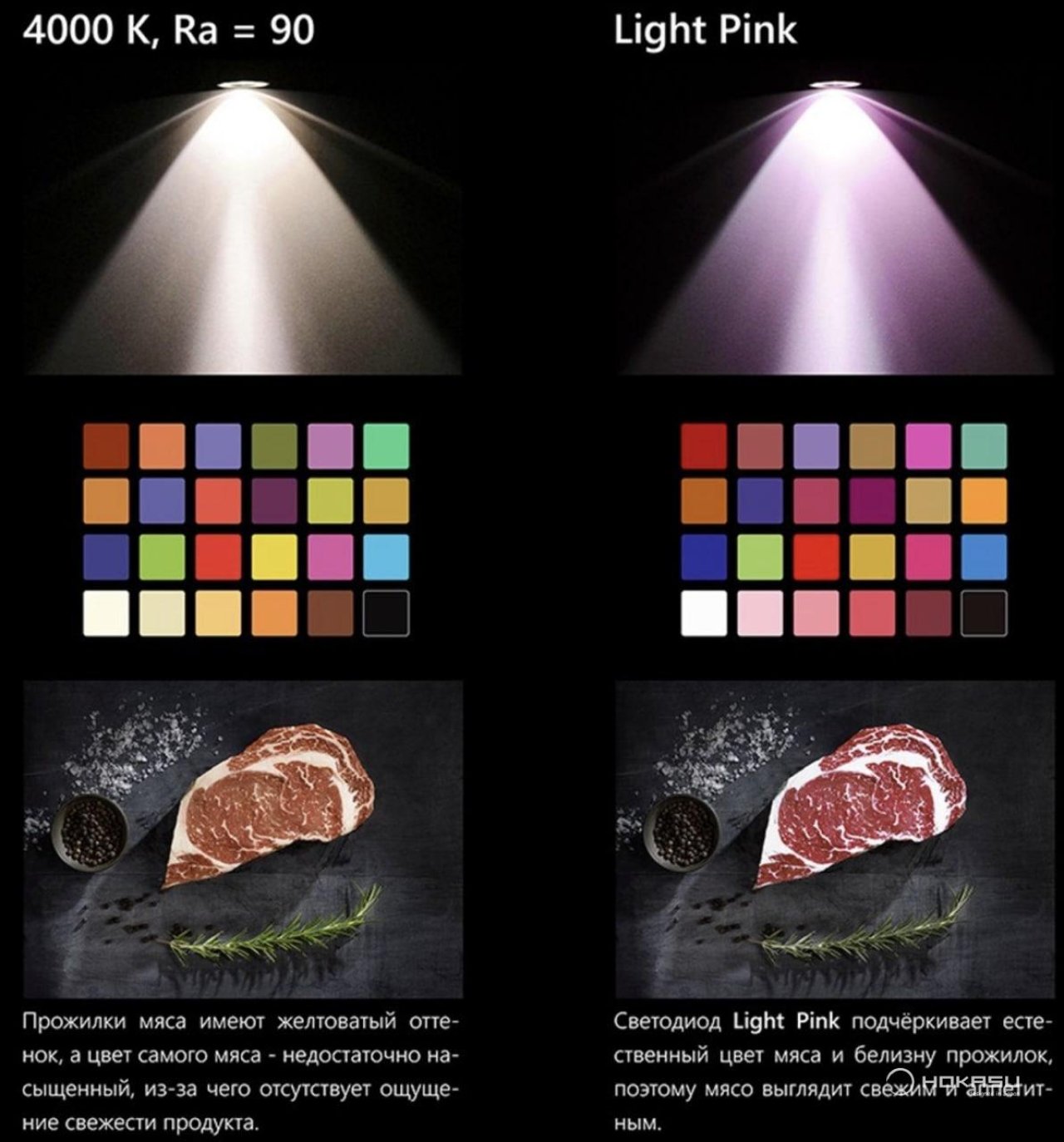
04.05.2024

